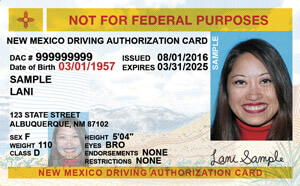- Updated for March 2025
- Based on 2025 NM commercial driver's license manual
Free New Mexico CDL HazMat Practice Test 2025
From the desert landscapes to the mountain ranges and high plateaus, you’re probably already accustomed to the challenges of the Rocky Mountains and the Sangre de Cristo Mountains as well as the extreme summer and winter weather of New Mexico. Adding the Hazardous Materials (Hazmat) endorsement to your Commercial Driver’s License (CDL) is an excellent way to increase marketability and potentially increase earnings. The Hazmat endorsement permits drivers, who would otherwise be forbidden, to transport materials that the U.S. government has deemed hazardous. Once you have the endorsement, the materials available for transport range from explosives and certain types of fuel to industrial chemicals, radioactive materials and infectious substances.
The minimum age for the Hazmat endorsement in the Land of Enchantment is 21. You’ll need to pass a Transportation Security Administration (TSA) fingerprinting and background check and the MVD knowledge test. The knowledge test covers federal regulations, substance handling, and a wide range of other topics. New Mexico’s knowledge test is made up of 30 questions and must be passed with a score of at least 80% (24 out of 30 answers must be correct) (New Mexico CDL Handbook 2025).
With safety as the paramount purpose of the endorsement process, New Mexico’s hazardous materials requiring the Hazmat endorsement include chemicals used in the oil and gas industry, explosives (due to mining and drilling operations), radioactive materials (due to proximity to nuclear facilities), gasoline, propane, and hazardous waste from industrial activities. Notable organizations requiring this endorsement include HollyFrontier Refining (Albuquerque), ExxonMobil (Carlsbad), and Los Alamos National Laboratory (Los Alamos). This sounds pretty lucrative, right? Let’s look at how we’ve eased the process for you.
Our MVD New Mexico CDL Hazmat Endorsement practice tests mimic what you will face on the official MVD test. They are strategically designed to avoid all the extra information you’ll find online and go straight to the relevant material. The first item on your to-do list is to apply for your fingerprinting and background check. This response can take weeks, so use that time to study with our practice tests. Once you receive the results and feel confidently prepared, you’ll visit the MVD with the necessary documents, pay the fees, pass the test, and immediately open the doors to this new world of opportunity.
- Perfect for first-time and renewal CDL/CLP applicants, and those adding endorsements
- Triple-checked for accuracy
What you need to know

What to expect on the actual NM MVD exam
questions
correct answers to pass
passing score
List of questions (classic view)
- You must NEVER smoke or perform any activity involving fire within 25 feet of
- Do you need to stop before a railroad crossing if you are hauling 100 pounds of Division 4.3 materials?
- Which of the following is NOT an acceptable type of marking for hazardous materials?
- A safe haven is
- What is the purpose of a driver placarding his or her vehicle?
- Which of the following materials are acceptable floor liners for transporting Division 1.1 or 1.2 materials?
- What is a technical name?
- How often should you check the tires on a placarded trailer that has dual tires?
- Which of the following are necessary qualifications for non-bulk packaging?
- Your engine runs a pump when you are delivering compressed gas. After finishing the delivery, when should you turn off the engine?
- If you are carrying Division 1.2 or 1.3 materials, how far away must you park from the traveled portion of the roadway?
- In what location must you keep your shipping papers that describe any hazardous materials?
- Where are the two main places that the hazardous material identification number appears?
- What are the major differences between cargo tanks and portable tanks?
- To determine if you need to use placards, which of the following is NOT something you need to know?
- What action should you take if you discover your hazardous materials shipment leaking at a rest stop but there is no phone available?
- Which of the following three hazard classes should NOT be placed into a temperature-controlled trailer (one with a heater/air conditioner unit)?
- If you are carrying Division 1.2 or 1.3 materials, how far away must you park from a bridge, tunnel, or building?
- When shippers package the material, they are trying to
- Besides the shipping papers and the packages, the other two places where the hazardous material identification number must appear are
- The Emergency Response Guidebook (ERG)
- A placarded vehicle must carry a fire extinguisher with a minimum rating of
- Which of the following hazard classes uses a transport index to determine how much of it can be loaded on a single vehicle for transport?
- If you are already carrying 100 pounds of silver cyanide, what precautions must you take if you are given papers at a dock to carry 100 cartons of battery acid?
- Cargo tanks are
- A hazardous material's identification number is determined by
- Carriers must give each driver who transports Division 1.1, 1.2, or 1.3 materials
- Foodstuffs for animal or human consumption must not be loaded in the same cargo space with
- In the Hazardous Materials Table, which column provides the hazardous material identification number for each hazardous material?
- If a shipment contains both hazardous and non-hazardous materials, the shipping paper must
- Alabama: Test 1 / Test 2
- Alaska: Test 1 / Test 2
- Arizona: Test 1 / Test 2
- Arkansas: Test 1 / Test 2
- California: Test 1 / Test 2
- Colorado: Test 1 / Test 2
- Connecticut: Test 1 / Test 2
- Delaware: Test 1 / Test 2
- District of Columbia: Test 1 / Test 2
- Florida: Test 1 / Test 2
- Georgia: Test 1 / Test 2
- Hawaii: Test 1 / Test 2
- Idaho: Test 1 / Test 2
- Illinois: Test 1 / Test 2
- Indiana: Test 1 / Test 2
- Iowa: Test 1 / Test 2
- Kansas: Test 1 / Test 2
- Kentucky: Test 1 / Test 2
- Louisiana: Test 1 / Test 2
- Maine: Test 1 / Test 2
- Maryland: Test 1 / Test 2
- Massachusetts: Test 1 / Test 2
- Michigan: Test 1 / Test 2
- Minnesota: Test 1 / Test 2
- Mississippi: Test 1 / Test 2
- Missouri: Test 1 / Test 2
- Montana: Test 1 / Test 2
- Nebraska: Test 1 / Test 2
- Nevada: Test 1 / Test 2
- New Hampshire: Test 1 / Test 2
- New Jersey: Test 1 / Test 2
- New Mexico: Test 1 / Test 2
- New York: Test 1 / Test 2
- North Carolina: Test 1 / Test 2
- North Dakota: Test 1 / Test 2
- Ohio: Test 1 / Test 2
- Oklahoma: Test 1 / Test 2
- Oregon: Test 1 / Test 2
- Pennsylvania: Test 1 / Test 2
- Rhode Island: Test 1 / Test 2
- South Carolina: Test 1 / Test 2
- South Dakota: Test 1 / Test 2
- Tennessee: Test 1 / Test 2
- Texas: Test 1 / Test 2
- Utah: Test 1 / Test 2
- Vermont: Test 1 / Test 2
- Virginia: Test 1 / Test 2
- Washington: Test 1 / Test 2
- West Virginia: Test 1 / Test 2
- Wisconsin: Test 1 / Test 2
- Wyoming: Test 1 / Test 2
Your go-to, trusted source
Experience the Driving-Tests differenceOur commitment to accuracy and quality in our practice tests
Explore our rigorous, multi-tiered verification process that ensures each question mirrors the official manual for unparalleled accuracy.

At Driving-Tests.org, we understand the importance of reliable and accurate practice tests to help you prepare for your DMV exam. That's why we've developed a meticulous process to create and continually update our practice questions, ensuring they reflect the most current driving laws and regulations.
Here's an inside look at how we maintain the highest quality in our practice tests.
Content Creation and Verification Process
- Alignment with Official Manuals:
Every question we develop is based on the most recent version of each state's official driving manual. Our team regularly monitors each state DMV's website for the latest updates to ensure our practice tests are always aligned with the most current information. - Community Feedback Integration:
We leverage feedback from our vast community of users to understand which topics are most frequently tested. This helps us focus on the areas that are most relevant and beneficial for your preparation. - Expert Content Creation:
Our in-house editor, Steven, who has extensive experience in driver education, crafts each question with precision. He conducts a thorough review of each question against the official manuals to ensure accuracy. - Rigorous Review Process:
Once Steven has finalized a set of questions, our team conducts a joint review session. This second level of scrutiny involves content accuracy, proofreading, and fact-checking to eliminate any errors. - User Feedback Mechanism:
After a question goes live on our site, we keep the lines of communication open. Each question features a feedback button, inviting users to report any issues or errors. This continuous feedback loop allows us to address and rectify any concerns promptly. - Responsive Updates:
In line with our commitment to accuracy, we quickly update our practice questions to reflect any changes in the DMV manuals. Additionally, we update the free electronic copy of the state's driver's license manuals on our site, typically within a few days after the DMV publishes them.
Our thorough quality control process ensures that you have access to practice tests that are as accurate and up-to-date as possible. We believe in the power of well-prepared drivers and are dedicated to providing you with the best study tools to help you succeed on your DMV exam.
Pass the First Time – Guaranteed
You’re moments away from your results.
Before you view them, see how 1.15 million drivers used Premium to pass faster.
Real Exam-Like New Mexico Questions
Get all exam-like questions seen on the real test.
99.06% Pass Rate vs. 49% Average
Most Premium users pass on their first try.
Money-Back Guarantee
We stand behind you until you pass.




